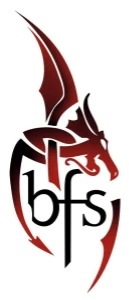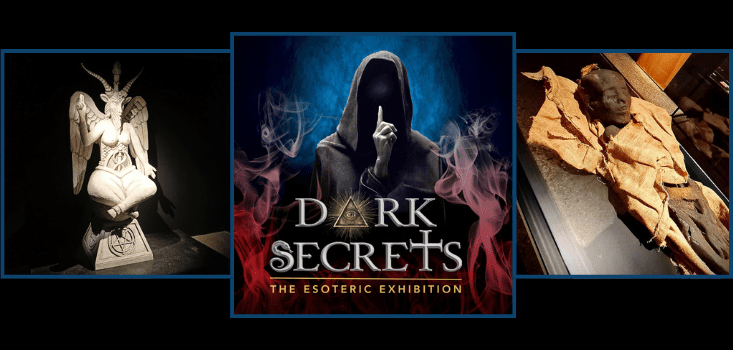London has always been home to secret societies, occult rituals, and cursed objects, but a new exhibition at The Vaults by Waterloo station is something entirely different… Lauren McMenemy investigates.
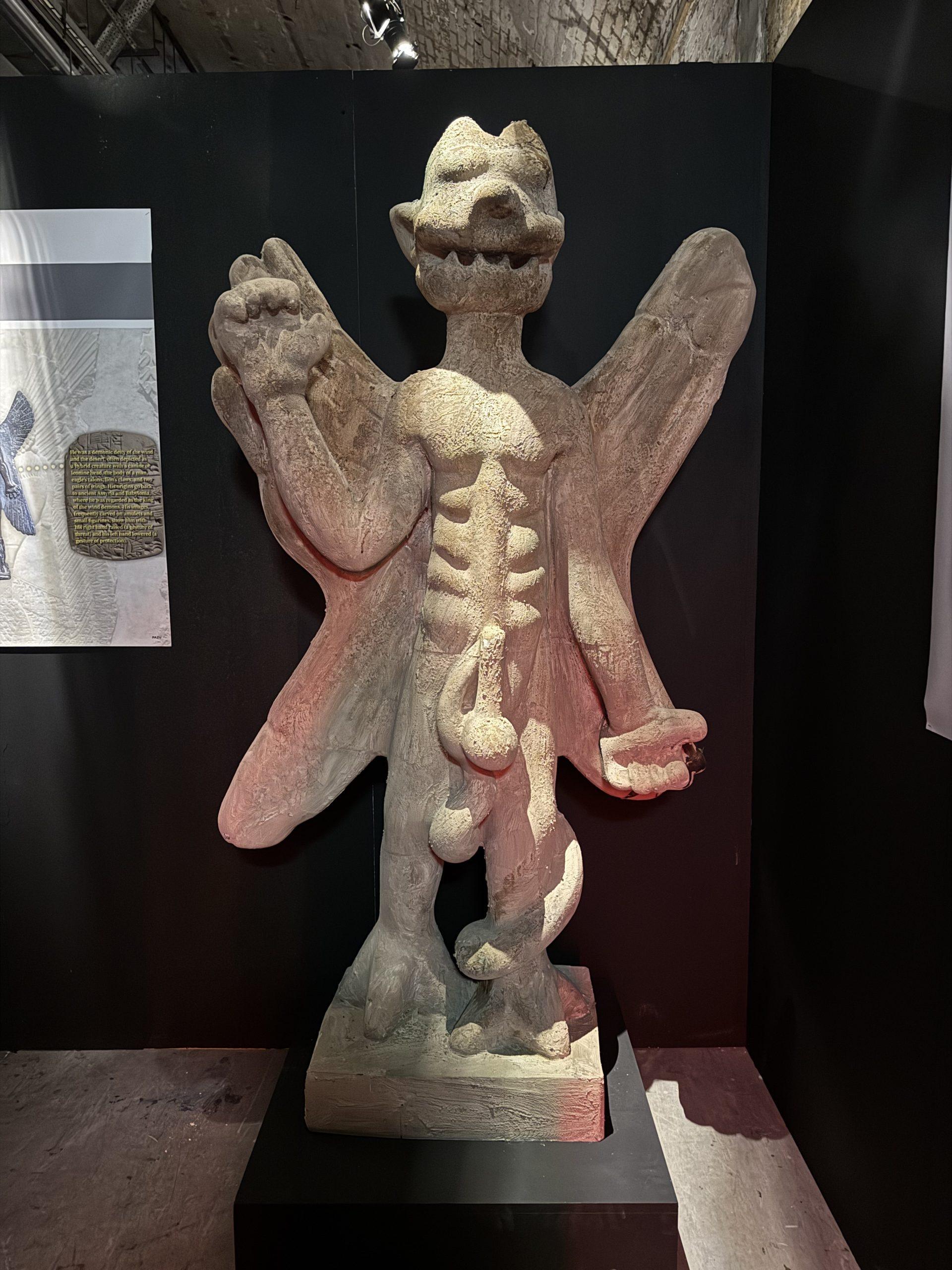
The air chills as you enter the tunnels. Red spotlights illuminate the bare and battered concrete walls of a moody narrow corridor, at the end of which you’re greeted by none other than Pazuzu, the very demon from The Exorcist, who’s chilling alongside Baphomet and a giant Golem. It’s a sign this is going to be a very real, very different experience.
Dark Secrets: The Esoteric Exhibition is the latest effort from Italmostre, the Italian cultural organisation acclaimed for its world-touring exhibition on serial killers; that one reached more than 120,000 visitors in London recently. This time around they’re delving into a world that’s perhaps even more perfect for the atmospheric venue hidden beneath the arches of Waterloo Station. The 27 rooms of Dark Secrets feature more than 1,000 original occult objects, all gathered into themes and on full display as the trains rumble above you, adding extra atmosphere to your visit.
The exhibition is a melange of mysteries, and includes both the so-called “noble” esotericism—the spiritual paths and occult sciences—as well as that which is commonly labelled “esoteric” but actually isn’t part of these traditions. The latter includes magical arts, divination, superstitions, prophecies, psi experiments, and curses, and makes up a large chunk of the exhibition as that’s likely to be what brings the people through the door. The collection also covers both the ancient and modern sides of esoterism, including some very cool late-20th century technologies designed to speak with the dead—such as the Euphonia pictured here, created by Joseph Faber, which was capable of imitating the human voice through levers, pipes, bellows, and the head of a mannequin.
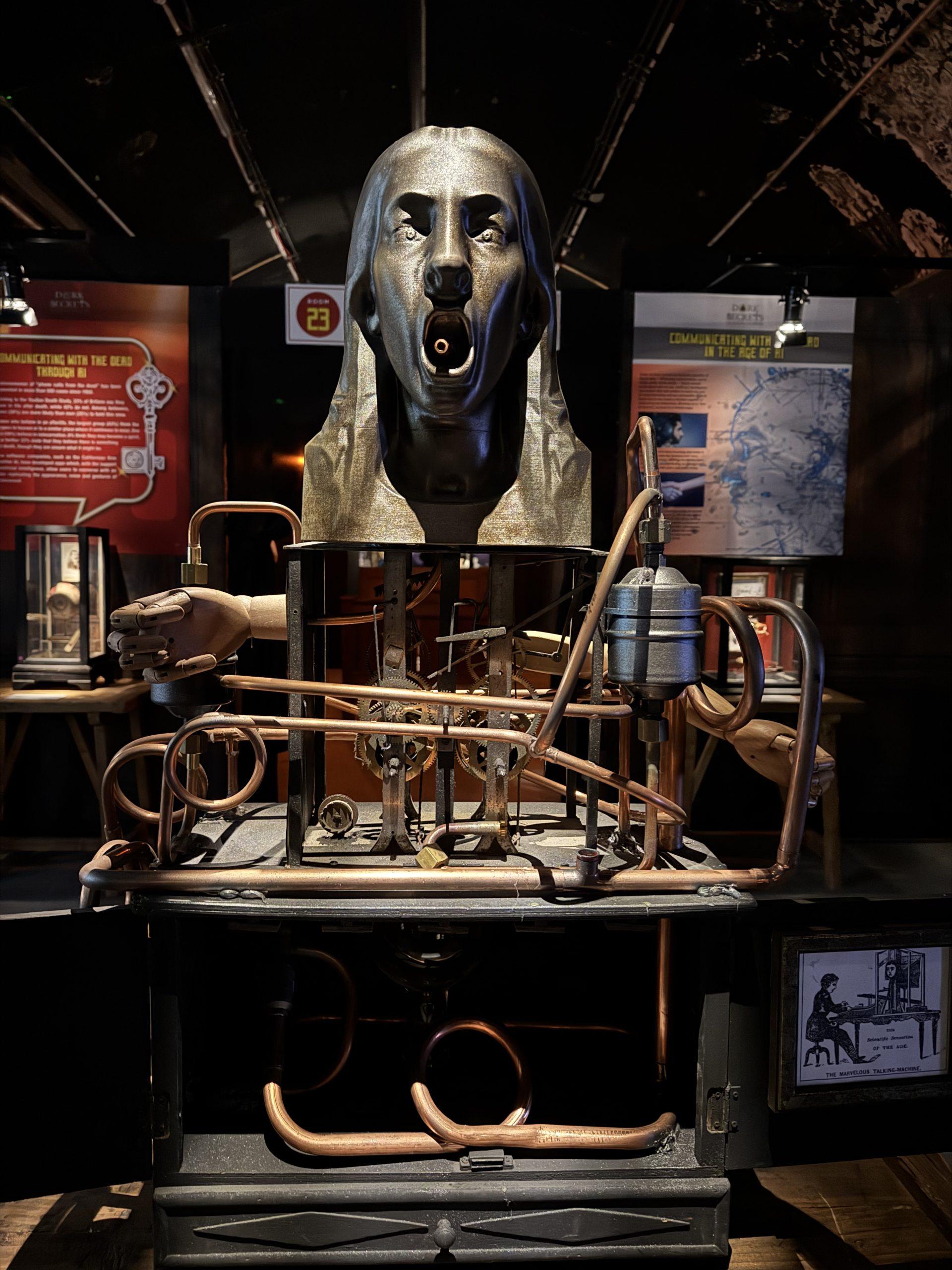
Curators are keen to point out Dark Secrets is not a scary attraction; they present these objects, artefacts, and recreations out of “scientific interest”, just as the psychical researchers of yore did. And that’s the best way to approach the exhibition, leading with curiosity, an open mind, and a thirst for knowledge. You’re not going to find the magic wand that will make your life perfect here, alas. (Trust me; I looked for it.)
The energy is palpable, though, whether it’s the chill in the damp air, or the eyes in that painting that are following you around the room, or the Satanic flutes that linger in the wind. I stared at a doll found in Italian ruins and heard her speak in my mind: “Lost… Lost… Lost…”
Who’s behind Dark Secrets?
Pictured: An altar used for Satanic rituals
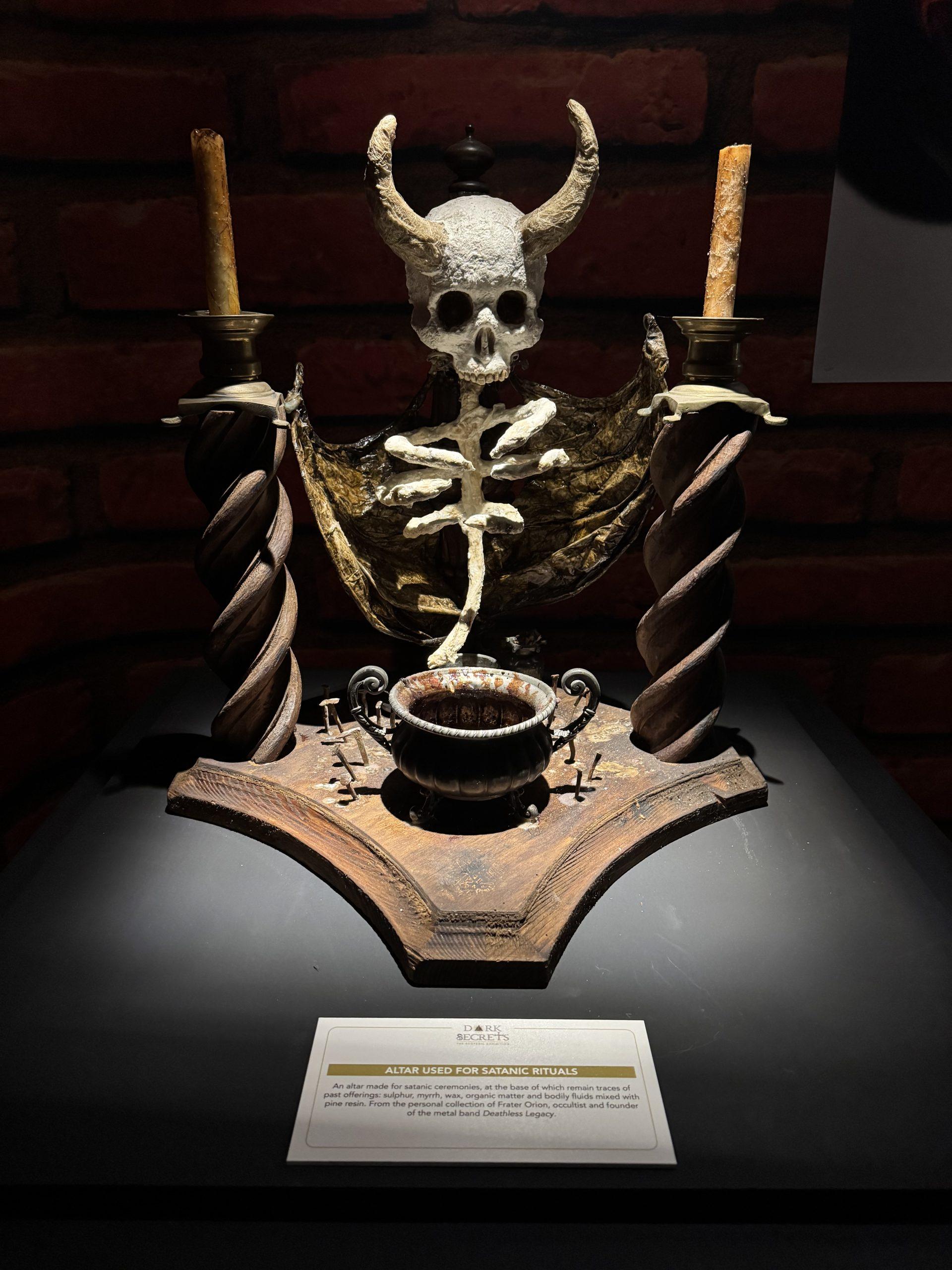
I spoke with renowned scholar of esotericism, and one of the exhibition’s curators, Christian Alpini, who’s been collecting paranormal objects since he was 15. He now has more than 300 miles of objects in his collection that are, he says, “full of energy”; many of them are part of this exhibition.
“I have many dolls, many artefacts used in black masses or in strange rituals, and all of these objects you can feel are full of energy—maybe not evil energy, but energy,” he said. “I have in one room many, many dolls and many objects, and I put a line of salt at the entrance of that room to purify it. Still, many people want to escape from the room, many people start crying. Many feel oppression and want out, but everyone finds it fascinating.”
When I asked what sort of people he hopes to attract to the exhibition, he gave a surprising statistic: in his experience, around 70% of visitors are women.
But what can we writers of speculative fiction get from the show? Alpini asks us to keep an open mind: “I hope that when you have looked at everything, you can see other points of view. This exhibition is not too scary, like a haunted house. Here, you can see this world, but can you reflect upon it? Can you think in which way, every day, you are near to this world? There are many centuries of studies and research, famous scientists, experiments, talks about esotericism, but there are still many, many mysteries.”
So what’s it like?
Pictured: one of the most haunting-looking cursed dolls
I mean, it’s like this was tailor-made for me and my guest at the press event, horror writer Ally Wilkes. This is the world that fascinates me, and I excitedly went around the rooms, looking at the objects—looking, not touching; you never know what touching might do—and occasionally reading the notes about them. And that’s the thing with me, an AuDHD writer with a very, very short attention span: exhibitions need to be accessible to keep my interest. Dark Secrets does that; you can dwell as long as you like in the rooms, but they are very small and very intimate, and you can be swept through quickly as well.
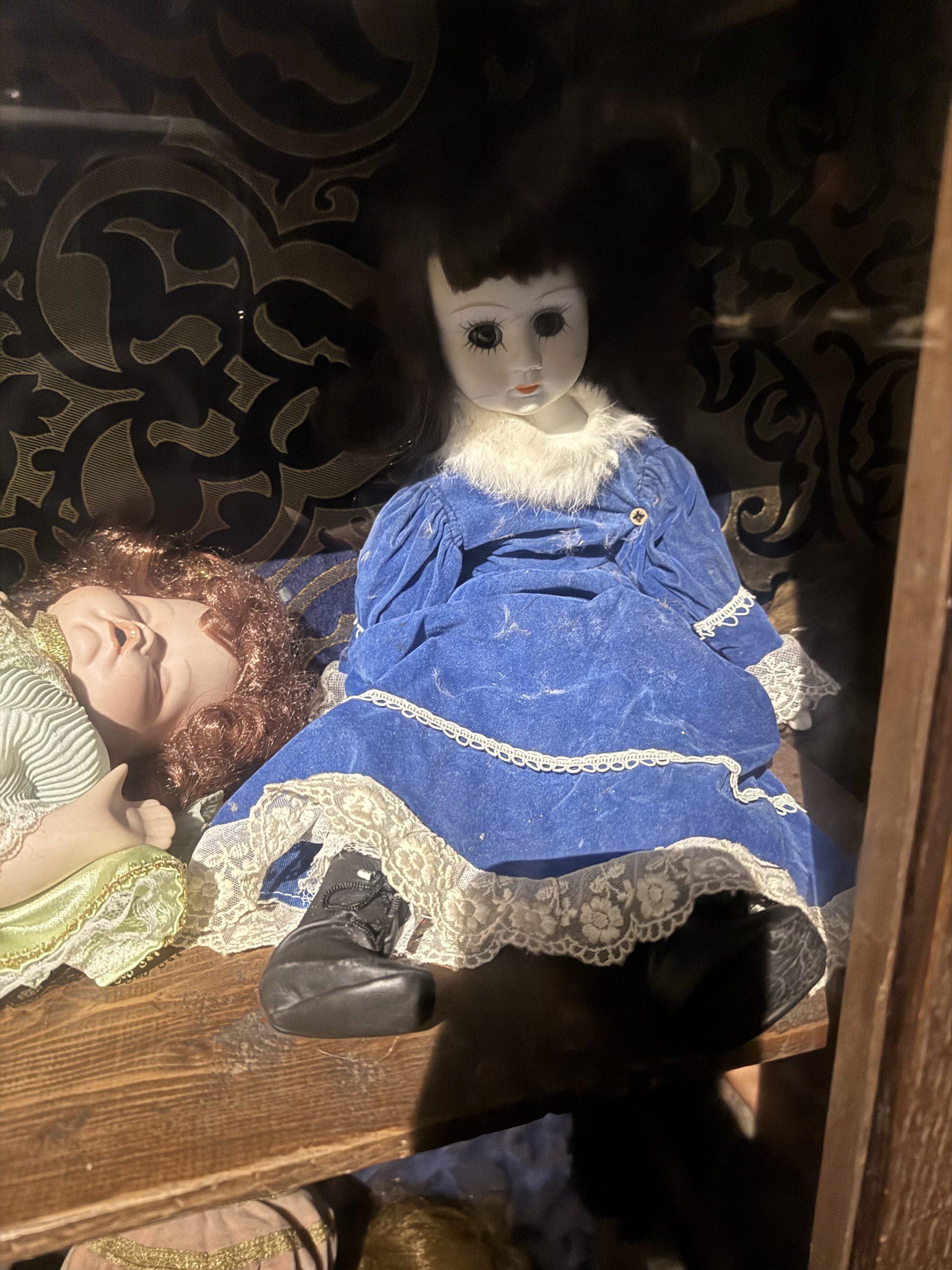
I’m not really one for audio guides, though one is available, and I rarely read through the entire note accompanying an object; I’m much more of a look and see and feel exhibition-goer. (Information is what the exhibition guide book is in the gift shop for! Mine was dutifully purchased.) I will note, though, that I agree with others who’ve written about the exhibition so far: it would be great to have some way to mark what is an original object and what is a recreation. Not every note explains this, so when it indicates something is a copy, the natural assumption is everything else is real—but, as Peter Laws points out in his Into the Fog episode about the exhibition (linked below), I don’t think the Ark of the Covenant is the original (unless I missed some very big news). This failing does tarnish what are actually original artefacts, as you start to assume they’re all recreations.
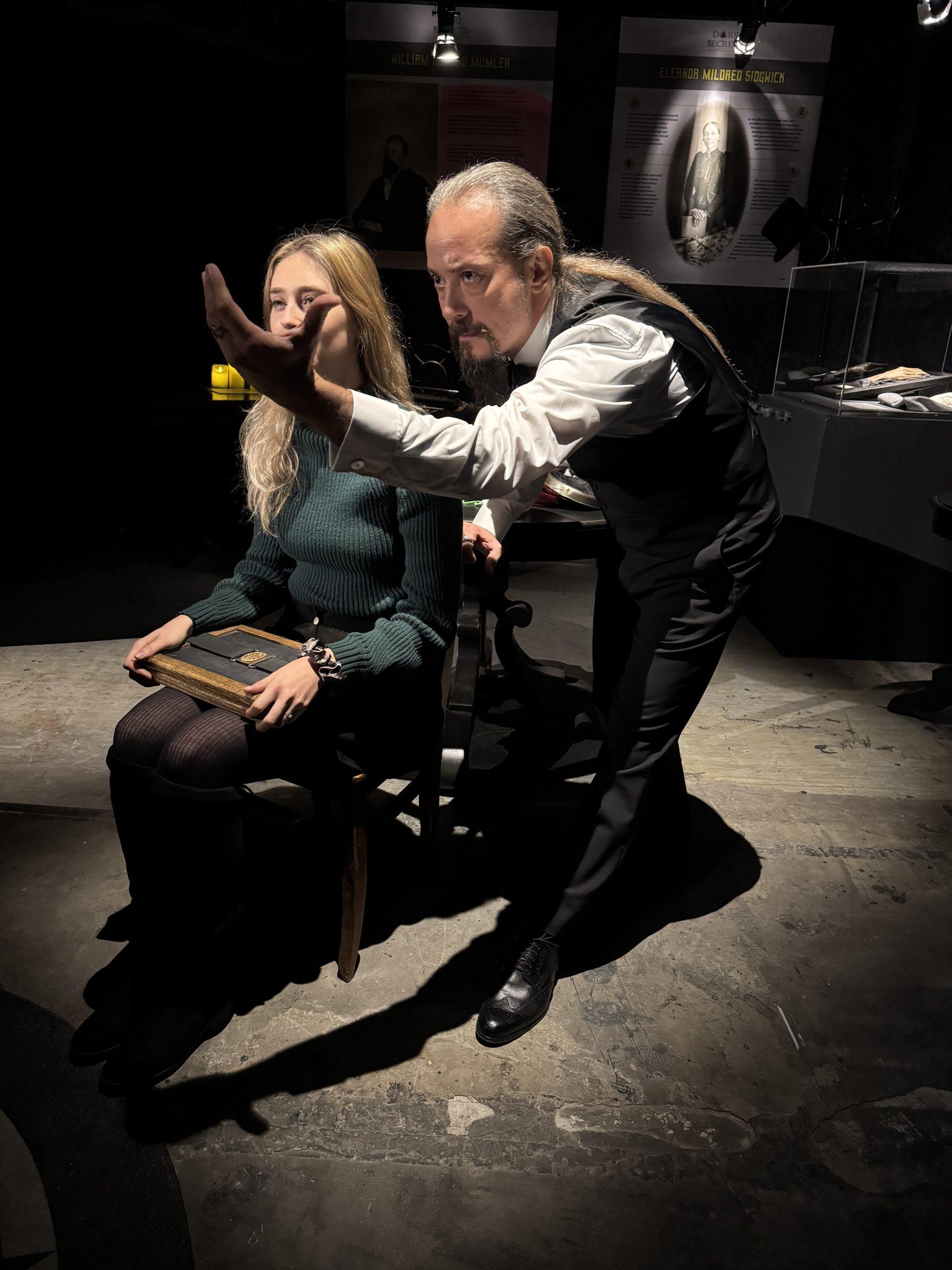
At the press event, we were treated to a special extra: a Victorian-style seance led by Dr Matteo Borrini, forensic anthropologist and international expert on vampirism, exorcism, and paranormal phenomena, and scientific consultant for National Geographic. Borrini told the press audience that they “may” offer this to the public, so keep an eye out! Though we didn’t get to sit around a table holding hands and waiting for knocks, we did see some of the Victorian medium’s tricks of the trade, including chalk boards and connecting to the dead (though we were limited to dead pets and famous people out of “respect”). And I must say, the ‘reading’ Borrini got from my wedding ring was rather a direct hit. Take from that what you will.
But, a word of warning: As much as this isn’t an exhibition playing things for chills or scares, it does contain very real and potentially offensive materials. Curators have done well to represent more than just the Western perspective, but that does mean it also contains objects from belief systems like voodoo, and calcified remains preserved according to Asian ritual traditions. There’s also a large collection of used Satanic artefacts which may be confrontational to those of a very religious disposition, and a section on the Nazi obsession with occultism, too. I’m also not sure how I feel about the KKK representation under secret societies, even if it’s very minor.
That said, each room is small and very well-signposted, so you can scoot quickly through anything you’re less interested in and/or want to avoid.
But if I were you, I’d try to pay close attention to everything you see. You never know what’s lurking behind a cabinet, or what shadows may follow you home…
About the exhibition
Location: The Vaults, Waterloo, London
Dates: Open now, it runs through to 31 May 2026
Opening hours: Wednesday and Thursday from noon to 7.30pm; Friday and Saturday from noon to 9.30pm; Sunday from noon to 7.30pm. Closed Monday and Tuesday.
Pictured: some faeries; they sit near the unicorn horn
Dark Secrets features 27 themed rooms feature more than 1,000 original objects, including:
- A rare 19th-century vampire hunting kit shown alongside the archaeological remains of “anomalous” burials where corpses were nailed down or decapitated
- The largest collection of cursed dolls ever displayed in Europe
- Ritual objects and rare documents belonging to Aleister Crowley, including his ceremonial staff
- A 1700s papal missal and a rare book containing the “imprint of a soul from Purgatory”
- A complete 1620 edition of the Malleus Maleficarum, the infamous witch-hunting manual
- Original scientific instruments used by Cesare Lombroso and other European scholars to investigate spiritualism and the paranormal
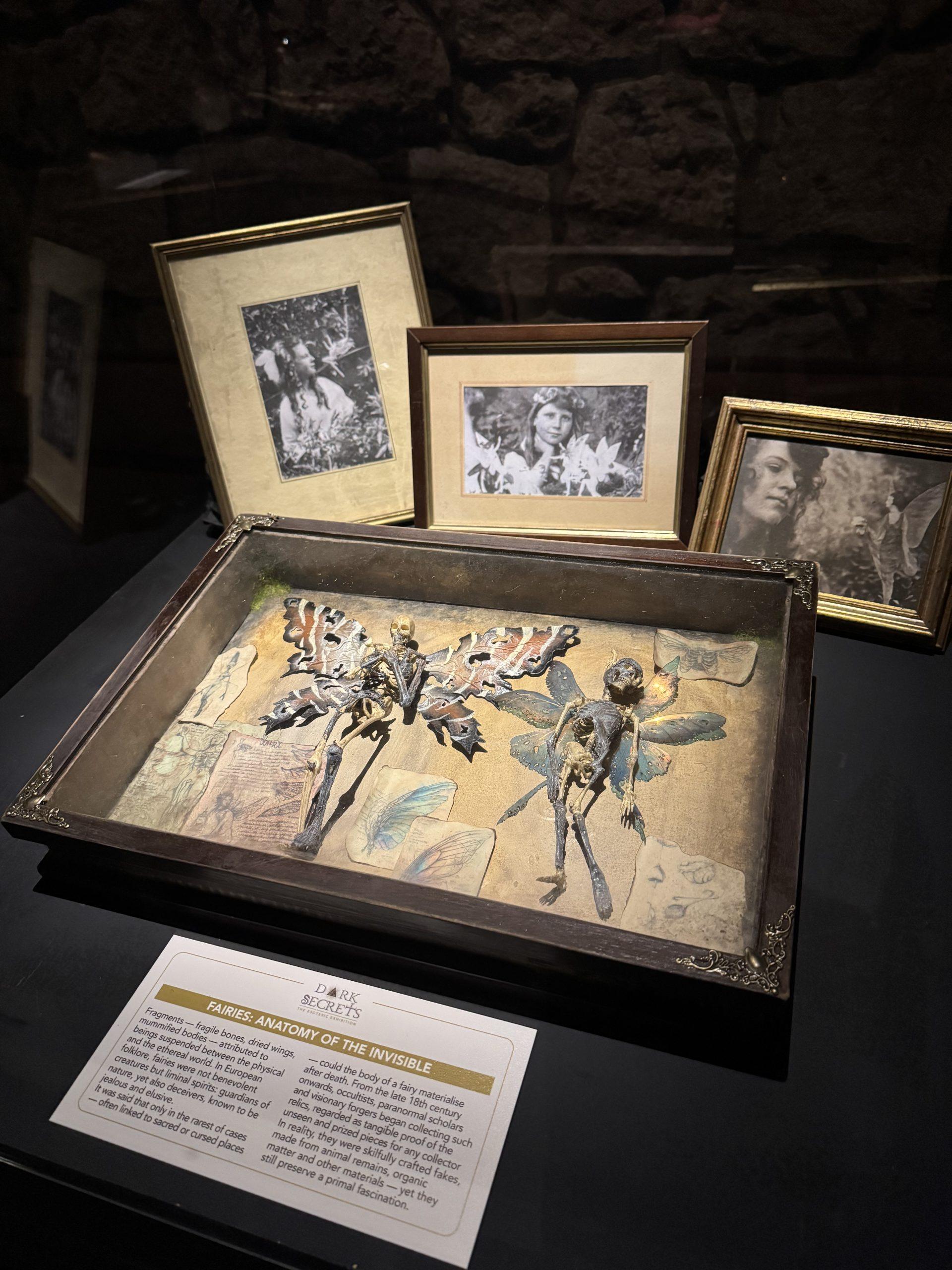
The moving image version
Watch writer, podcaster and YouTube Peter Laws’ Into the Fog episode about the exhibition (and you may get a glimpse of yours truly, too!).
